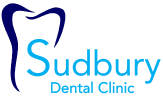Is Dental Pain Always Tooth-Related
You may think that dental pain always indicates a problem with your teeth, but that isn’t always the case. Understanding the various causes of dental discomfort can help you determine the right course of action, whether it involves a trip to the dentist or addressing other health issues.
In this post, we will explore different reasons for dental pain, from gum disease to sinus infections, enabling you to better assess your condition and seek appropriate treatment.
Key Takeaways
- Dental pain can originate from jaw muscles, nerves, or sinus issues, not just teeth.
- Accurate diagnosis is crucial to identify the true source of pain and provide proper treatment.
- Don’t ignore persistent oral or facial pain; consult a dental professional for evaluation.
Beyond Teeth: Common Non-Dental Sources of Pain
Identifying the source of dental pain can be trickier than you expect, especially when symptoms overlap with non-dental issues. Various conditions can mimic tooth pain, leading you to believe your teeth are the problem when, in fact, it’s your jaw muscles or sinuses at play.
Understanding these alternative sources of pain can help you address symptoms effectively and avoid unnecessary treatments.
Jaw and Muscle Tension: The Silent Culprit
Muscle tension in your jaw can be a hidden cause of dental pain, often overlooked. Stress, grinding teeth (bruxism), or even improper posture can strain your jaw muscles, leading to discomfort that feels tooth-related.
You might experience dull achiness around the jaws, headaches, or pain radiating towards your teeth, prompting you to seek dental care when muscle relaxation techniques could provide relief.
“Factors like stress or bruxism create jaw muscle tension that often mimics dental pain, but simple relaxation exercises or wearing a night guard can dramatically alleviate these symptoms before assuming a dental issue.”
- Dr. Khaja Siddiqui, DDS, A General Dentist at Sudbury Dental Clinic in Sudbury, Ontario, Canada
Sinus Issues and Their Overlapping Symptoms
Sinus problems can be a significant contributor to perceived dental pain, as the upper teeth’s roots are located close to your sinuses. When you suffer from sinusitis, inflammation can cause discomfort that feels similar to a toothache.
Many people mistakenly attribute the pain to their teeth, resulting in unnecessary dental visits instead of seeking treatment for their sinus congestion.
Sinus pressure can lead to a throbbing sensation in the upper jaw, particularly around the molars and premolars. You may also notice symptoms like facial swelling, nasal congestion, or headaches accompanying the pain.
Recognizing this correlation is vital, as treating sinus issues usually alleviates the discomfort without requiring any dental intervention. If you find your toothache coinciding with a cold or allergy flare-up, addressing the underlying sinus problem could be the key to your relief.
The Misdiagnosis Dilemma: When Pain Points to the Wrong Problem
Pain conditions can often lead to misdiagnosis, especially when symptoms overlap across bodily systems. You may feel discomfort in your mouth, leading you to believe that the source lies within your teeth.
However, this is a common pitfall, as other underlying issues could be masquerading as dental pain. Relying solely on surface symptoms could result in overlooking a more serious health concern.
Understanding the potential for misdiagnosis is imperative for seeking appropriate treatment and ensuring that your pain is addressed accurately.
Neurological Conditions: More than Just a Toothache
Neurological disorders can manifest in ways that mimic tooth pain, leaving you puzzled about the true source. Conditions such as trigeminal neuralgia can cause sharp, severe facial pain that often feels like it’s originating from your dental area, leading to confusion and potential dental treatments when a neurological issue may be at play.
Heart-Related Symptoms: An Ominous Overlap
Pain associated with heart conditions can frequently be misinterpreted as dental issues. You might experience jaw and tooth pain, which can be a symptom of angina or even a heart attack.
This overlap is alarming, highlighting the necessity of recognizing that not all pain in your mouth stems from dental problems.
Symptoms of heart conditions like myocardial infarction often include radiating pain to the jaw and teeth, alongside other signs such as shortness of breath and chest pressure. You can underestimate these indicators at your own peril, as ignoring them in favor of seeking dental treatment could lead to dangerous consequences.
If your dental discomfort is persistent and accompanied by other signs commonly associated with heart issues, it is imperative to consult a healthcare professional immediately. Being proactive is key; your pain might be more than just a toothache, and timely intervention can save your life.
Analyzing Pain: The Importance of Location and Quality
Identifying the precise location and quality of your pain can significantly influence the diagnosis process. You might feel discomfort in your jaw, teeth, or surrounding tissues, but understanding how these sensations correlate with potential issues is fundamental.
For example, sharp pain localized in a single tooth often indicates a dental problem like decay or abscess, while a radiating ache across your jaw could signal a condition like temporomandibular joint disorder (TMJ). Evaluating factors such as the type of pain—dull, throbbing, or sharp—enhances clarity in determining its source.
Distinguishing Dental Pain from Other Discomforts
Dental pain can often be mistaken for other types of discomfort, such as sinus pressure or muscle tension. You might experience referred pain, where problems in nearby areas, like your sinuses, can mimic toothache.
Being aware of distinct symptoms, like sinusitis causing facial pressure, can help you differentiate and seek appropriate treatment. Noting where the pain originates and any accompanying symptoms will guide your dentist in diagnosing the real issue effectively.
The Role of Pain Intensity and Duration
Your pain’s intensity and duration provide further insight into what might be wrong. For instance, mild and short-lived pain might suggest a minor irritation, while persistent and intense pain often indicates a dental emergency, such as an infection.
Additionally, chronic pain—lasting weeks or longer—could reveal deeper issues, like gum disease or nerve damage. Understanding these dynamics not only aids in a timely diagnosis but also helps you communicate more effectively with your dentist.
Intensity and duration play key roles in understanding your dental pain’s nature. Pain that escalates quickly and becomes unbearable usually demands immediate attention. For example, if you experience a sudden throbbing discomfort from a previously non-problematic tooth, it’s likely indicative of a developing abscess.
Conversely, mild discomfort that recurs intermittently might suggest a cavity or sensitivity rather than an urgent dental need. Factoring in how long the pain lasts—whether it’s a fleeting episode or a continuous nag—provides valuable insight for your dental professional, influencing their recommended course of action.
Practical Steps for Identifying the Source of Pain
Understanding the source of dental pain involves a systematic approach. Start by keeping a detailed log of your symptoms, including the location, intensity, and frequency of the pain. Pay attention to what triggers the discomfort—foods, temperatures, or specific activities.
Additionally, assess other symptoms such as swelling, fever, or jaw stiffness, as these can indicate non-tooth-related issues. This comprehensive information will serve as a valuable reference for healthcare providers and can aid in faster diagnosis and treatment.
Self-Assessment Techniques: What to Look For
Take note of specific details during your self-assessment. Is the pain sharp or throbbing? Does it radiate to other areas, like your jaw or ear?
Identifying patterns, like pain while chewing or sensitivity to hot or cold stimuli can help pinpoint the issue. Check for visible signs like swelling or discoloration in your gums.
Understanding these characteristics can help differentiate between potential dental issues and other sources of pain.
When to Seek Professional Help: A Guideline
Consulting a dental professional becomes vital when your pain persists for more than a few days or worsens in intensity. If you experience swelling, fever, or noticeable changes in your bite, these symptoms can indicate a more serious condition that requires immediate attention.
Additionally, unmanageable pain or discomfort that disrupts your daily activities should prompt a visit to your dentist or healthcare provider.
In many cases, early intervention can prevent the progression of underlying issues. For example, untreated cavities can lead to infections or root canal treatment, increasing complexity and costs.
If you find over-the-counter pain relief insufficient, this is also a signal that professional guidance is necessary. Monitoring your pain level and symptoms helps you make informed decisions, ensuring that potential complications are managed promptly.
The Importance of Comprehensive Dental and Medical Evaluation
Understanding the source of dental pain often requires a thorough assessment that goes beyond your teeth. A comprehensive evaluation can identify overlapping issues between dental and medical health, such as jaw joint disorders, sinus infections, or systemic problems like diabetes or heart disease.
By organizing all your health information, professionals can accurately determine the underlying cause of your discomfort, ensuring you receive appropriate treatment to relieve pain and prevent future issues.
Integrated Care: Collaborating Between Dentists and Physicians
Integrative care models leverage the expertise of both dentists and physicians, which can significantly enhance patient outcomes. By fostering communication between these specialists, you benefit from a holistic approach that addresses all aspects of your health.
For instance, if your dental pain stems from a systemic condition, your dentist may work closely with your primary care doctor to formulate a comprehensive treatment plan, enabling coordinated care that improves your overall wellness.
The Value of Patient Advocacy: Being Your Own Health Champion
Taking an active role in your health care can lead to better health outcomes. As a patient advocate, you hold the responsibility to voice concerns, ask pertinent questions, and seek second opinions when necessary.
Educating yourself about your symptoms and available treatments can empower you to make informed decisions that best suit your needs, ultimately leading to a more effective management plan for your dental pain.
Being an active participant in your health care means not only seeking answers but also understanding your options. Researching symptoms, maintaining a health diary, and openly discussing your concerns with both your dentist and physician can help bridge gaps in care.
For instance, if you experience pain that seems connected to anxiety or stress, sharing this with both specialists can lead to a multifaceted approach that might include both dental treatments and mental health resources. Your proactive stance encourages a partnership in care that fosters accountability and a shared commitment to your health journey.
Summing up
The source of dental pain is not always related to tooth issues; it can stem from other conditions such as sinus infections, jaw problems, or even headaches. When you experience discomfort in your mouth, it’s necessary to consider these possibilities and not solely attribute it to dental issues.
Seeking professional advice can help uncover the true cause of your pain, allowing for appropriate treatment and relief. Always prioritize your oral health and consult a dental expert when unsure about your symptoms.
Stop guessing about the source of your dental discomfort – whether it’s a cavity, sinus pressure, or jaw muscle tension, proper diagnosis is key to effective treatment. Trust the professionals at Sudbury Dental Clinic in Sudbury, Ontario, Canada to provide the thorough evaluation you deserve by visiting https://sudburydentalclinic.ca/ and scheduling your consultation today.
 Call Us
Call Us 



